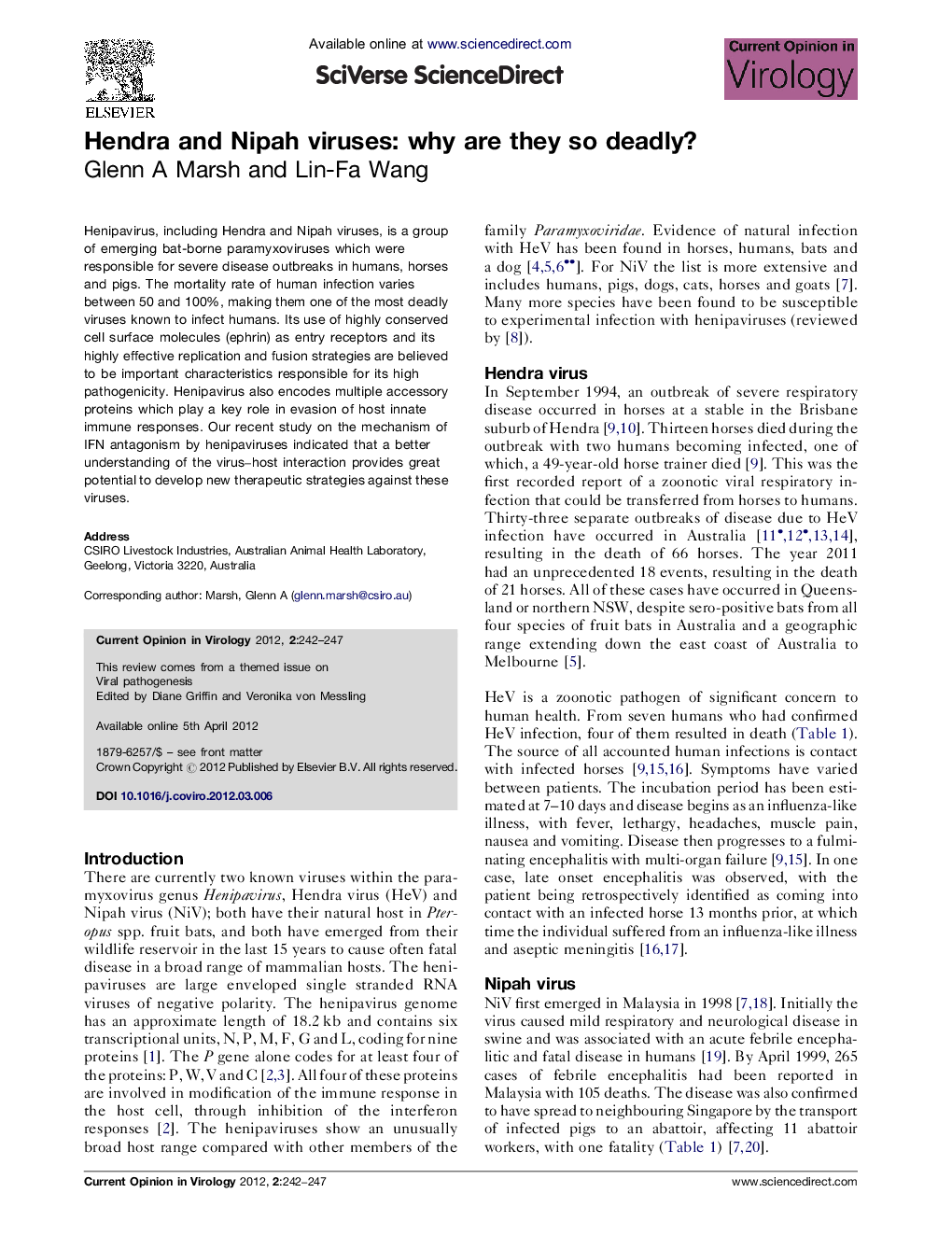| Article ID | Journal | Published Year | Pages | File Type |
|---|---|---|---|---|
| 5806958 | Current Opinion in Virology | 2012 | 6 Pages |
Henipavirus, including Hendra and Nipah viruses, is a group of emerging bat-borne paramyxoviruses which were responsible for severe disease outbreaks in humans, horses and pigs. The mortality rate of human infection varies between 50 and 100%, making them one of the most deadly viruses known to infect humans. Its use of highly conserved cell surface molecules (ephrin) as entry receptors and its highly effective replication and fusion strategies are believed to be important characteristics responsible for its high pathogenicity. Henipavirus also encodes multiple accessory proteins which play a key role in evasion of host innate immune responses. Our recent study on the mechanism of IFN antagonism by henipaviruses indicated that a better understanding of the virus-host interaction provides great potential to develop new therapeutic strategies against these viruses.
⺠This paper examines henipavirus pathogenesis at different levels. ⺠Virus-host interaction and immune evasion is reviewed in relation to pathogenesis. ⺠A link between pathogenesis study and novel therapeutics is provided. ⺠The paper concludes with an emphasis on study of bats as the natural reservoir.
